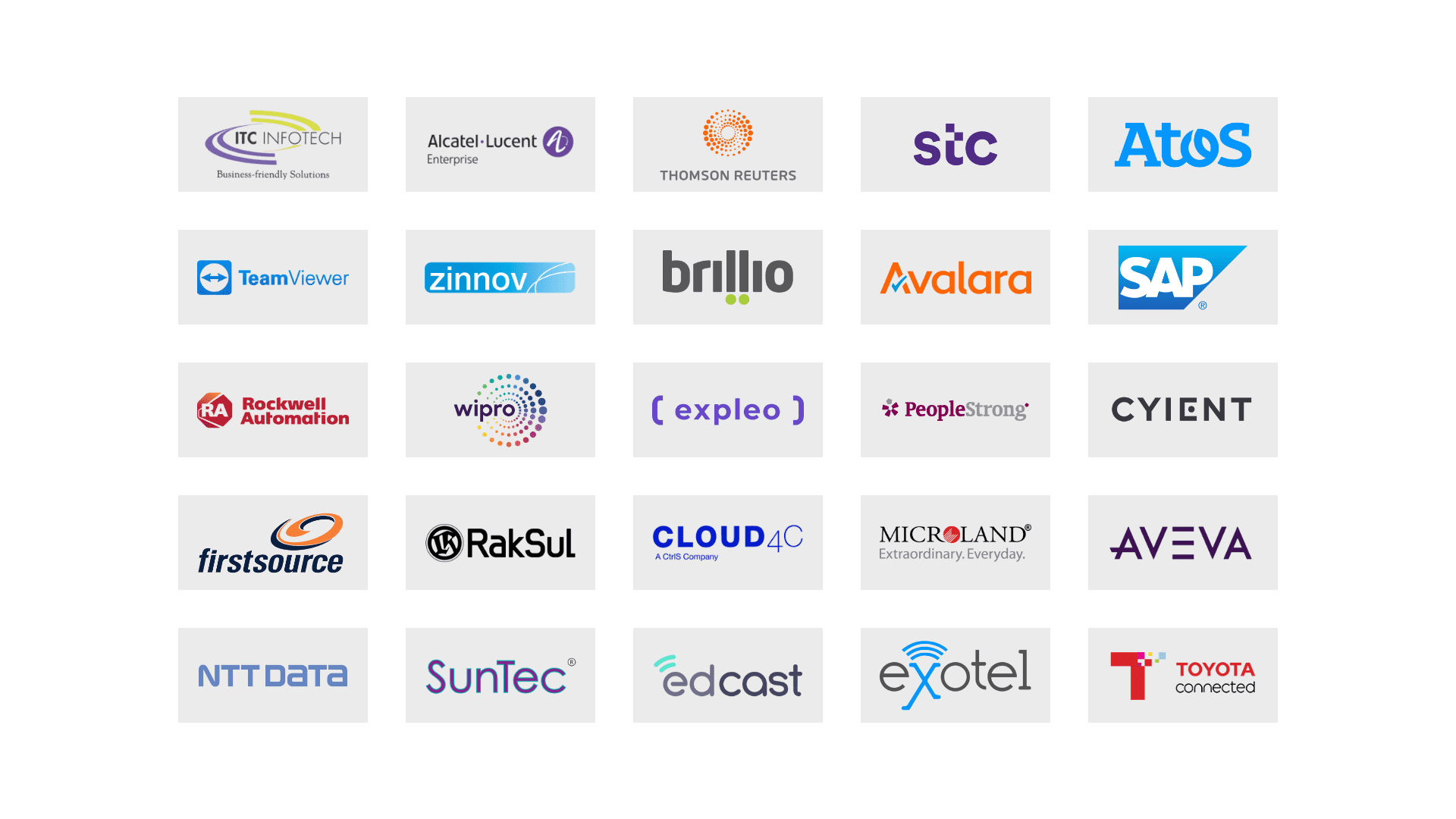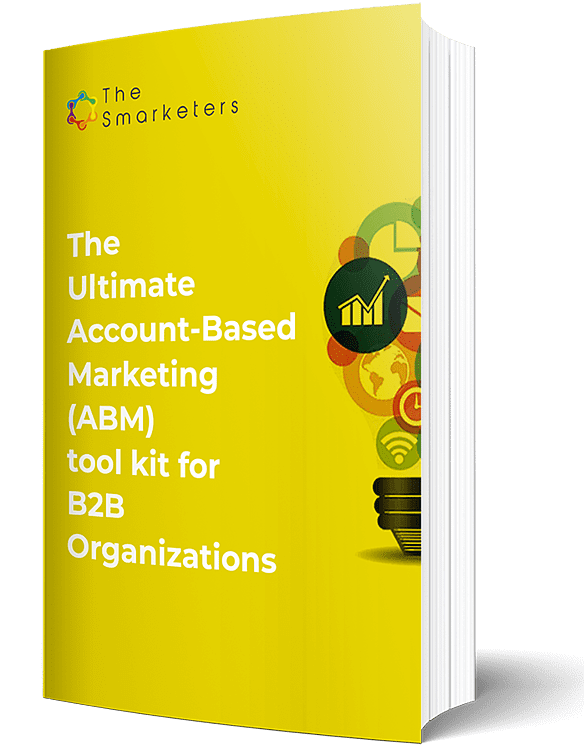



Focused Account Based Marketing to land you whale sized accounts.
Talk To UsLearn More
We work with B2B companies across the spectrum to capture & convert qualified leads through innovative account-based marketing & inbound marketing strategies. B2B marketing in today’s crowded, competitive market isn’t just a checklist, our work crosses all boundaries to deliver measurable business results.



With the shift to customer-centricity, enterprises are increasingly moving towards account-based marketing for the promise of a strong ROI. ABM isn’t an expensive marketing approach - but a mindset of personalization and good marketing. We are experts at integrating ABM with your inbound to drive real outcomes within your budget constraints.

From creating a conversion-optimized website to engaging content and driving organic traffic, inbound marketing is an intricate process of creating informative, engaging content and making that content reachable. Our content strategists who specialize in multiple industry domains and geographies paired with SEO experts help you attract and convert prospects through your website.

Smart planning is the key to successful B2B marketing programs. Our experts will create a B2B marketing strategy that is tailored entirely to the needs of your business and the results you are looking for in the short, medium as well as long term. Let us help you build a rock-solid plan to define your brand, set strategic goals, drive the right campaigns, stay ahead of the competition and scale your business.

From webinars to webcasts to full-fledged virtual summits, digital events are not only cost-effective but also reach a large audience, which is why B2B companies are turning to virtual events to generate interest, engage prospects, and drive sales. Any virtual event is only as successful as its strategy, planning, and execution —The Smarketers provides end-to-end virtual event marketing services exclusively for B2B companies.

HubSpot is a full suite of solutions built to power growth marketing initiatives like no other. As an Inbound + ABM agency and a HubSpot Gold Partner, we work with you to attract, engage, and delight your target audience. We use highly efficient ABM strategies integrated with Inbound Marketing to build strong relationships, increase deal velocity, and generate higher ROI.

A well-designed website lets you show your prospect what your brand is really about, attract quality traffic, generate qualified inbound leads and customers. Our expertise in SEO, UX, conversion path, and messaging enables us to build websites that function as an extension of your brand and achieve results at every stage of the marketing funnel.

B2B decision-making is influenced by a number of complex factors, but emotion remains one of the most powerful. We create strategic, expertly crafted stories, graphic design, and brand experiences that attract, nurture, and retain the right audience. With our creative support, your audience will see your solution as never before.

Creating unique and relevant content helps you to attract the right prospects, nurture leads all along the buyer’s journey and finally convert them into paying clients. Our certified content strategists, writers, and editors can help you become a thought leader in your industry and maximize interest in your brand.

We help B2B companies drive targeted, quality traffic by building reliable and scalable demand generation programs. We go past “vanity” metrics to focus on marketing outcomes and return on investment. With a consistent test-measure-optimize approach, we help build traction in demand generation campaigns, increase qualified leads, improve conversion rates, and accelerate growth.

It’s important to focus on the behavior, needs, and interests of your individual prospects and leads to improve their experience with your brand and their desire to convert. Using marketing automation technology, we eliminate redundancy and improve the relevance and transparency of your campaigns to keep your business and leads on track. With marketing automation, you will gain extraordinary insights into your marketing efforts.

With the shift to customer-centricity, enterprises are increasingly moving towards account-based marketing for the promise of a strong ROI. ABM isn’t an expensive marketing approach – but a mindset of personalization and good marketing. We are experts at integrating ABM with your inbound to drive real outcomes within your budget constraints.

From creating a conversion-optimized website to engaging content and driving organic traffic, inbound marketing is an intricate process of creating informative, engaging content and making that content reachable. Our content strategists who specialize in multiple industry domains and geographies paired with SEO experts help you attract and convert prospects through your website.

Smart planning is the key to successful B2B marketing programs. Our experts will create a B2B marketing strategy that is tailored entirely to the needs of your business and the results you are looking for in the short, medium as well as long term. Let us help you build a rock-solid plan to define your brand, set strategic goals, drive the right campaigns, stay ahead of the competition and scale your business.

From webinars to webcasts to full-fledged virtual summits, digital events are not only cost-effective but also reach a large audience, which is why B2B companies are turning to virtual events to generate interest, engage prospects, and drive sales. Any virtual event is only as successful as its strategy, planning, and execution —The Smarketers provides end-to-end virtual event marketing services exclusively for B2B companies.

HubSpot is a full suite of solutions built to power growth marketing initiatives like no other. As an Inbound + ABM agency and a HubSpot Gold Partner, we work with you to attract, engage, and delight your target audience. We use highly efficient ABM strategies integrated with Inbound Marketing to build strong relationships, increase deal velocity, and generate higher ROI.

A well-designed website lets you show your prospect what your brand is really about, attract quality traffic, generate qualified inbound leads and customers. Our expertise in SEO, UX, conversion path, and messaging enables us to build websites that function as an extension of your brand and achieve results at every stage of the marketing funnel.

B2B decision-making is influenced by a number of complex factors, but emotion remains one of the most powerful. We create strategic, expertly crafted stories, graphic design, and brand experiences that attract, nurture, and retain the right audience. With our creative support, your audience will see your solution as never before.

Creating unique and relevant content helps you to attract the right prospects, nurture leads all along the buyer’s journey and finally convert them into paying clients. Our certified content strategists, writers, and editors can help you become a thought leader in your industry and maximize interest in your brand.

We help B2B companies drive targeted, quality traffic by building reliable and scalable demand generation programs. We go past “vanity” metrics to focus on marketing outcomes and return on investment. With a consistent test-measure-optimize approach, we help build traction in demand generation campaigns, increase qualified leads, improve conversion rates, and accelerate growth.

It’s important to focus on the behavior, needs, and interests of your individual prospects and leads to improve their experience with your brand and their desire to convert. Using marketing automation technology, we eliminate redundancy and improve the relevance and transparency of your campaigns to keep your business and leads on track. With marketing automation, you will gain extraordinary insights into your marketing efforts.



We are an experienced team of creative, analytical, and business-oriented Smarketers who are extremely passionate about what we do. SMBs as well as Fortune 500 tech companies trust us with their marketing, and for good reason. We were recognized by ITSMA in 2019 for Marketing Excellence in ABM and by Clutch as a leading B2B agency in India.
We focus on measurable KPIs right from the start of every project. Despite the fact that all our initiatives are structured for the long-term, we also focus on measuring and ensuring day-to-day success and ROI. Our ability to remain flexible and nimble allows us to pivot as needed to be certain that every dollar spent yields results.
The Smarketers is much more than your average agency, we are your partner — a globally recognized one that is committed to ensuring sustainable, long-term success for your business.
You can hear it from our clients that we have achieved results for or from the ones who coined the term Account-based Marketing (ABM) itself – ITSMA awarded us the Marketing Excellence Gold Award for our Innovative ABM Program.



Spend 10 minutes answering questions about your company’s growth strategy to get your grade plus a custom-built growth plan to help you improve it.
Smarketers LLP,
1st Floor, WeWork,
Rajapushpa Summit,
Nanakramguda Rd,
beside Kapil Towers, Financial District, Manikonda Jagir,
Hyderabad, Telangana 500032

Alert: Beware of fraudulent Google review spam misusing our company name! Learn More

